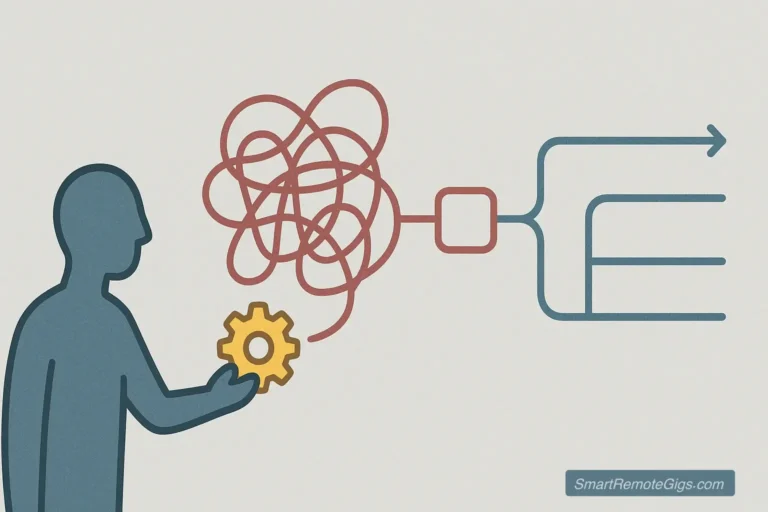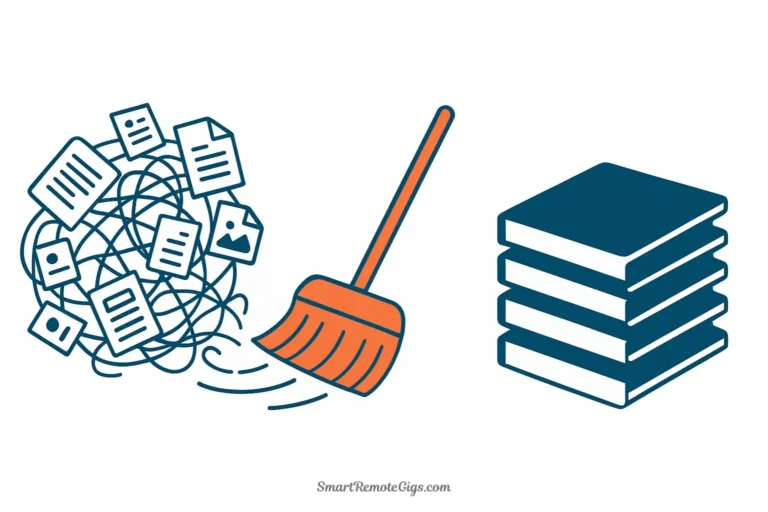Do you ever feel like you have fifty browser tabs open in your brain? That nagging sensation of forgotten tasks lurking in the corners of your mind? The constant, low-level anxiety of being perpetually behind on everything that matters?
You’re not alone. In our hyperconnected world, the average person juggles 150+ tasks, commitments, and “mental notes” at any given time. Your brain—brilliant as it is—wasn’t designed to be a storage device for every grocery list item, work deadline, and promise you’ve made.
Getting Things Done (GTD) isn’t just another productivity hack. It’s a systematic approach to achieve what David Allen calls “Mind Like Water”—that zen-like state where your mind is clear, focused, and ready to engage with whatever life throws your way.
This guide to Getting Things Done is designed specifically for absolute beginners. No jargon, no overwhelming complexity—just a clear path from chaos to control.
What You’ll Learn in This GTD Beginner’s Guide
- What GTD is and why it works better than traditional to-do lists
- A simple breakdown of the 5 core GTD steps
- How to choose your first, simple tools (without getting paralyzed by options)
- The single most important habit that determines GTD success or failure
- Your exact first steps to start implementing GTD today
What is GTD? (And Why Isn’t It Just a To-Do List?)
The Core Philosophy
Most people think productivity is about getting more done faster. Getting Things Done (GTD) flips this assumption on its head. GTD is about getting tasks out of your head and into a trusted external system, so your brain can focus on thinking and creating rather than remembering and worrying.
Think about it: when you’re trying to have an important conversation, but part of your mental bandwidth is consumed remembering to pick up milk, call your dentist, and respond to that email from last week—you’re not fully present. GTD solves this by creating what Allen calls an “external brain.”
Meet the Creator
David Allen, a management consultant and productivity expert, developed the GTD method in the early 2000s. His book “Getting Things Done: The Art of Stress-Free Productivity” became a phenomenon because it addressed something universal: the modern epidemic of mental overload.
Allen spent decades working with executives and knowledge workers, observing what separated the calm, effective leaders from the perpetually stressed ones. The answer wasn’t working harder—it was having better systems.
The Key Difference
A traditional to-do list is a collection of tasks. The GTD system is a comprehensive methodology for processing all of life’s inputs—emails, random thoughts, commitments, ideas, and projects—into organized, actionable outcomes.
Where a simple list says “call mom,” GTD helps you capture, process, and organize everything from “call mom” to “plan European vacation” to “figure out career direction” in a way that ensures nothing falls through the cracks.
The 5 Core Steps of the GTD Method (A Simple Walkthrough)
The GTD workflow consists of five interconnected steps that transform mental chaos into organized action. Think of these as the engine that powers your entire productivity system.
Step 1: Capture – Get Everything Out of Your Head

The Goal: Collect every “open loop” or incomplete thing in your life into trusted collection tools.
How It Works: Instead of trying to remember everything, you systematically capture every task, idea, commitment, and concern into designated “inboxes.” This could be a physical tray on your desk, a notebook, a smartphone app, or all of the above.
The magic happens when your brain realizes it no longer needs to hold onto information—it trusts that everything important is captured somewhere reliable.
Beginner’s Tip: Start with what Allen calls a “Mind Sweep.” Grab a notebook and spend 15 minutes writing down absolutely everything on your mind—work projects, personal errands, things you need to buy, people you need to call, ideas you’ve been pondering. Don’t edit or organize yet; just dump it all out.
📋 Ready for the Complete Process?
👉 Get Our Step-by-Step Guide: How to Do Your First GTD Mind Sweep
Step 2: Clarify – Process Your Inbox to Zero
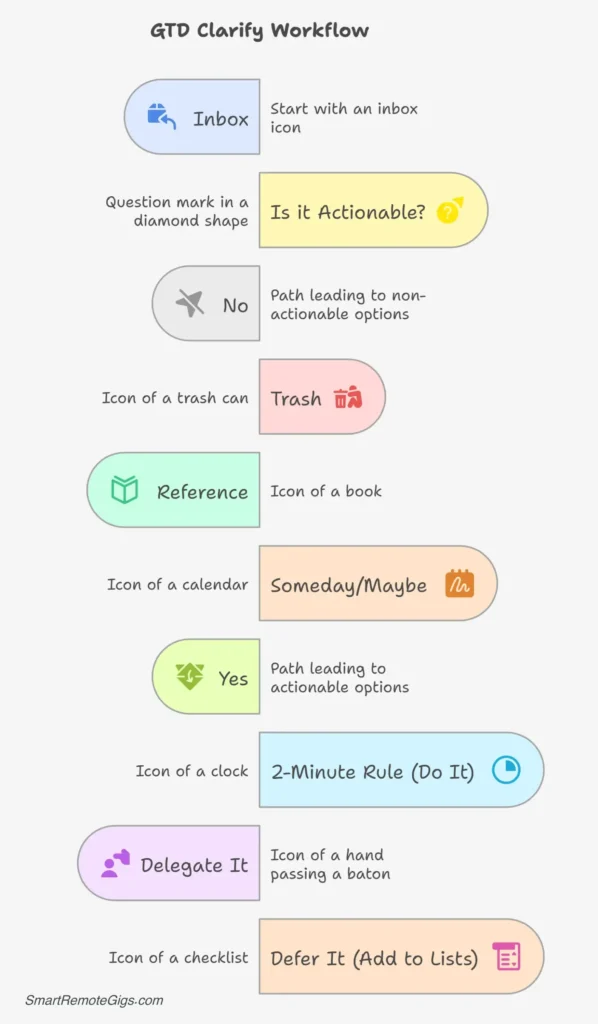
The Goal: Transform each captured item from a vague “thing” into a clear, specific, actionable outcome.
How It Works: Take each item from your capture tools and ask the fundamental question: “Is it actionable?”
If yes: Determine the specific next physical action required. “Plan vacation” becomes “Research flights to Rome on Kayak.” “Fix kitchen faucet” becomes “Call Johnson’s Plumbing for quote.”
If no: Either delete it, file it for reference, or move it to a “Someday/Maybe” list for future consideration.
Beginner’s Tip: Follow the 2-Minute Rule. If an actionable item takes less than two minutes to complete, do it immediately rather than adding it to a list. This builds momentum and prevents your system from getting clogged with tiny tasks.
Step 3: Organize – Put Everything in Its Right Place
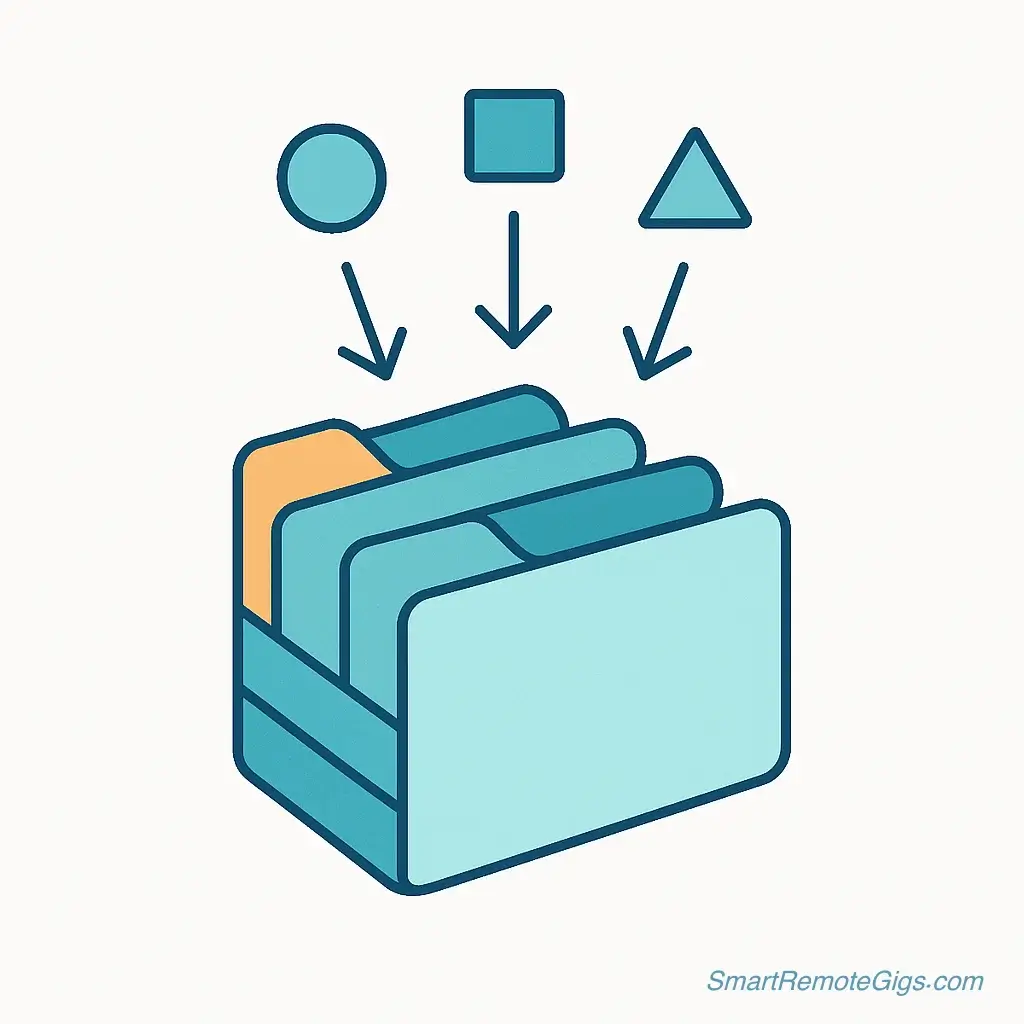
The Goal: Sort your clarified items into specific categories that match how you actually work and live.
How It Works: GTD uses several key categories:
- Projects: Anything requiring more than one step to complete
- Next Actions: Single, specific physical actions you can take
- Waiting For: Items you’ve delegated or are waiting on from others
- Calendar: Time-specific appointments and deadlines
- Someday/Maybe: Things you might want to do but not now
Beginner’s Tip: Don’t overwhelm yourself creating dozens of lists initially. Start with just three core lists: Projects, Next Actions, and your Calendar. You can add sophistication later as the habits solidify.
Step 4: Reflect – Keep Your System Trusted and Functional
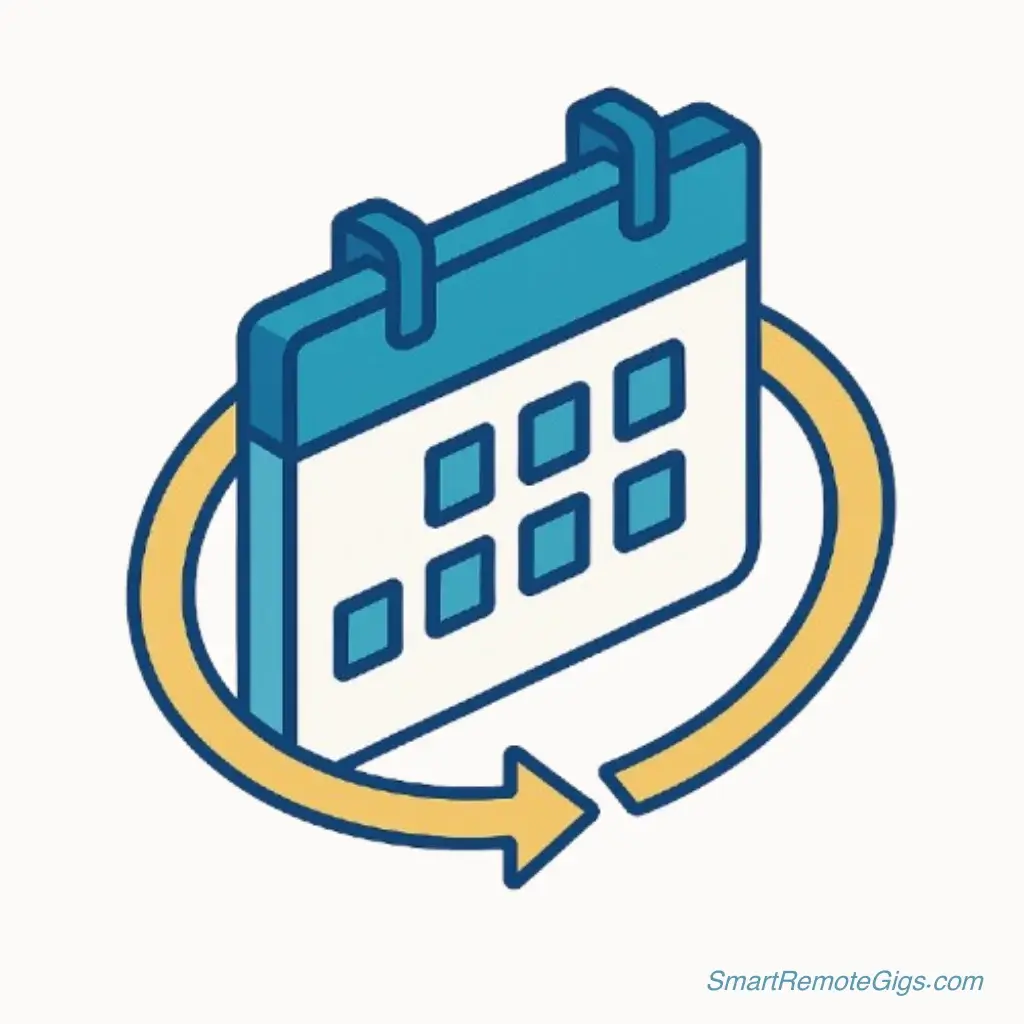
The Goal: Regularly review your system to ensure it remains current, complete, and trustworthy.
How It Works: GTD requires two types of reviews:
- Daily Reviews: Quick scans of your calendar and next actions
- Weekly Reviews: Comprehensive system maintenance to get clear, current, and creative
The Weekly Review is where you process new captured items, review all your projects, update your lists, and plan your upcoming week.
Beginner’s Tip: The Weekly Review is absolutely critical—it’s what transforms GTD from a collection of lists into a living, breathing system you can trust. Without it, your system will become stale and unreliable within weeks.
We provide a comprehensive, step-by-step process in our GTD Weekly Review Checklist to make this effortless.
Step 5: Engage – Make Trusted Choices and Do
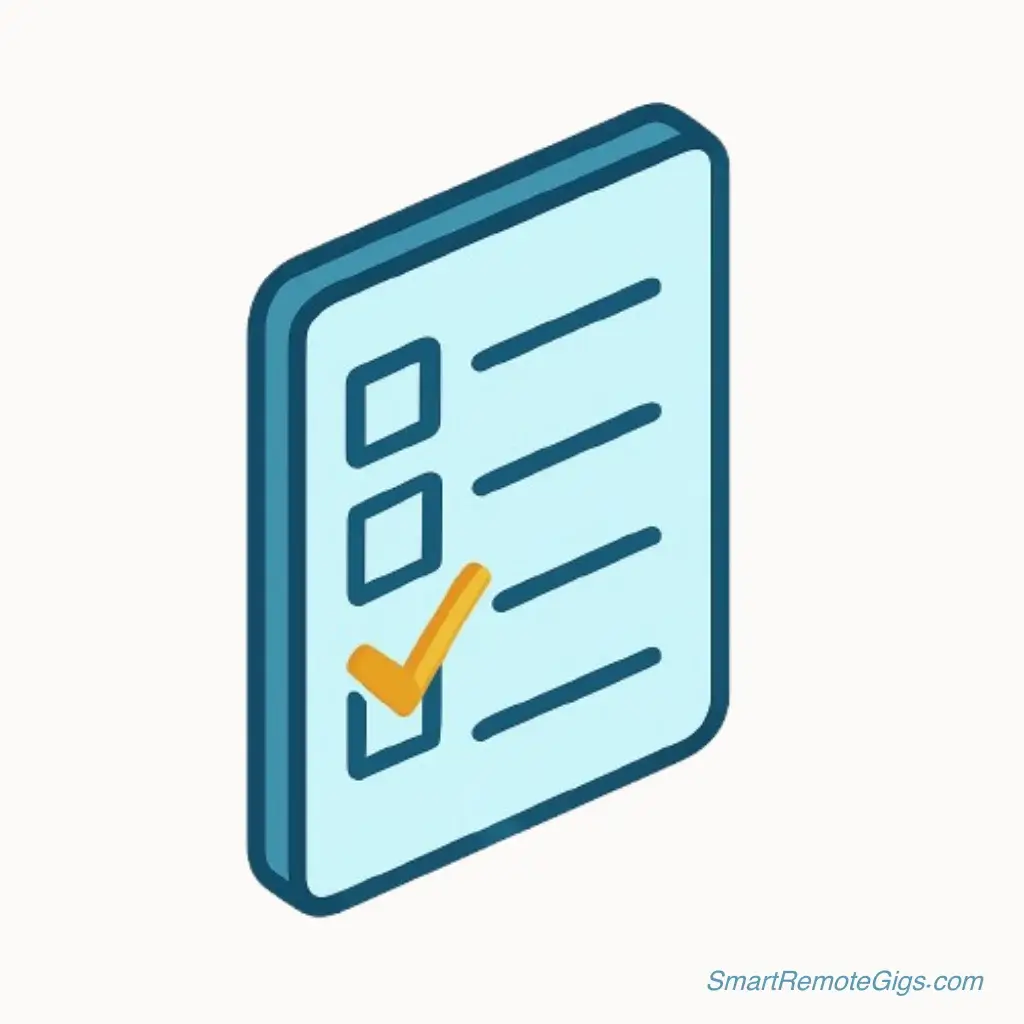
The Goal: Confidently decide what to work on at any given moment, knowing you’re making the best choice possible with the information available.
How It Works: When you have time and energy to work, you consult your organized lists and choose actions based on:
- Context: Where you are (@Home, @Computer, @Phone)
- Time available: Do you have 5 minutes or 2 hours?
- Energy level: Are you fresh or mentally drained?
- Priority: What’s most important right now?
Beginner’s Tip: When you have a spare moment, resist the urge to ask “What’s most important?” Instead ask, “What can I do right now, right here, with the time and energy I have?” Then trust your Next Actions list to provide good options. For a powerful way to maintain focus during these work blocks, many practitioners combine GTD with the Pomodoro Technique.
Your First GTD Setup: Keeping It Simple
The Tool Debate
Here’s where many beginners get stuck: choosing the “perfect” tools. Apps, software, notebooks, folders—the options are endless and paralyzing.
Here’s the truth: The tool matters far less than the habit. David Allen himself started with manila folders and a labeler. The most sophisticated digital setup in the world won’t help if you don’t consistently capture, clarify, and review.
Your Beginner’s Toolkit (The Analog Start)
For your first month, consider starting with the simplest possible tools:
- Physical In-Tray: A simple basket or tray for capturing physical items (mail, business cards, notes)
- Capture Notebook: One small notebook that goes everywhere with you
- Calendar: Whatever you already use (digital or paper)
- Simple Lists: Start with just a notebook divided into sections for Projects and Next Actions
This low-tech approach forces you to focus on the methodology rather than getting distracted by feature-rich apps.
Ready for Digital?
Once you’ve established the basic habits (usually 4-6 weeks), digital tools can add significant power to your system. They excel at search, cross-device synchronization, and complex organization.
We dive deep into this decision in our Analog vs. Digital GTD comparison and review the top options in our guide to the best GTD apps for 2025.
The Keystone Habit: Why the Weekly Review is Non-Negotiable
If you remember nothing else from this getting things done guide, remember this: GTD lives or dies by the Weekly Review.
Without this weekly maintenance, your system will become a graveyard of outdated lists and forgotten commitments. With it, you’ll maintain complete trust in your system, which is what enables the “mind like water” state Allen describes.
The Three Goals of Weekly Review
- Get Clear: Process all your inboxes to zero
- Get Current: Review and update all your project and action lists
- Get Creative: Look ahead at upcoming commitments and identify new projects
Making It Effortless
The Weekly Review should take 30-60 minutes and become as routine as brushing your teeth. Most GTD practitioners find Friday afternoons or Sunday evenings work best.
🎯 Never Miss Another Weekly Review 👉 Get Our Complete GTD Weekly Review Checklist Printable PDF with time estimates for each section
Common Questions from GTD Beginners
Is GTD too complicated for me?
GTD can seem overwhelming at first glance—five steps, multiple lists, weekly reviews. But remember: you’re already managing all this complexity, just poorly. GTD simply gives you a systematic approach to what you’re already doing.
Start with capturing and the 2-minute rule. Add one element every week until the full system is in place. Thousands of people have successfully implemented GTD, from busy parents to Fortune 500 CEOs.
How much time does this take to maintain?
Daily: 5-10 minutes reviewing your calendar and next actions Weekly: 30-60 minutes for the Weekly Review Initial setup: 2-4 hours for your first complete mind sweep and system setup
Most people find they save far more time than they invest because they eliminate the mental overhead of trying to remember everything and the time lost to forgotten commitments.
What’s the biggest mistake beginners make?
The most common mistake is trying to implement everything perfectly from day one. GTD is a practice, not a destination. Start simple, build habits gradually, and refine your system over time.
Another critical error is skipping the Weekly Review. This single habit determines whether your GTD system thrives or withers.
We cover five other crucial mistakes in our guide to the 5 most common GTD mistakes.
How does GTD connect to my long-term goals?
That’s an excellent question. While the 5 core steps manage your daily workflow, GTD includes a powerful framework for long-term planning called the Horizons of Focus. This advanced model connects your day-to-day actions directly to your larger goals, vision, and even your life’s purpose. We cover it in detail in our complete guide to mastering GTD’s Horizons of Focus.
Once you’re comfortable with the basics, exploring this framework is the key to achieving long-term success with the methodology.
Do I have to use all parts of GTD at once?
Absolutely not. While the five steps work synergistically, you can implement them gradually:
Week 1-2: Focus on capturing everything and applying the 2-minute rule Week 3-4: Add basic organization with Projects and Next Actions lists Week 5-6: Implement Weekly Reviews Week 7+: Refine contexts, add Waiting For lists, explore advanced concepts
The key is building sustainable habits rather than trying to become a GTD master overnight.
Your First Action: Start Your Mind Sweep
Reading about GTD is helpful, but the real magic begins when you start doing it. The transformation from mental chaos to clarity happens through action, not theory.
Your mission, should you choose to accept it: Stop reading productivity articles and start implementing. The system that will change your relationship with work and life is waiting for you to begin.
GTD isn’t about perfection—it’s about progress. It’s not about doing more—it’s about doing what matters with complete confidence that nothing important is slipping through the cracks.
Thousands of people have made this journey from overwhelm to control. Some started as disorganized college students, others as executives drowning in responsibility. What they all had in common was taking the first step.
Your first step is simple: Capture everything on your mind. Don’t just read about it—do it.
🚀 Take Action Now 👉 Start Your 30-Minute Guided Mind Sweep Complete step-by-step instructions to clear your head in one session
The organized, stress-free life you’ve been wanting is just one mind sweep away.



